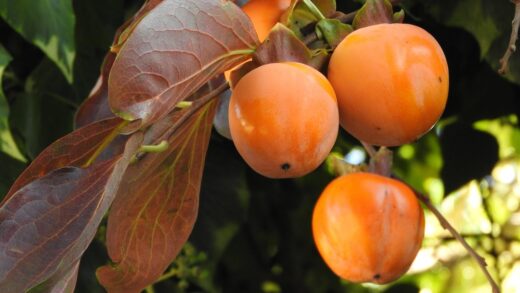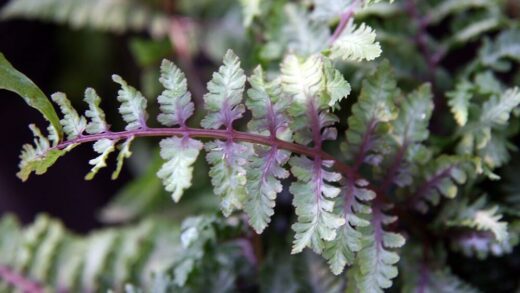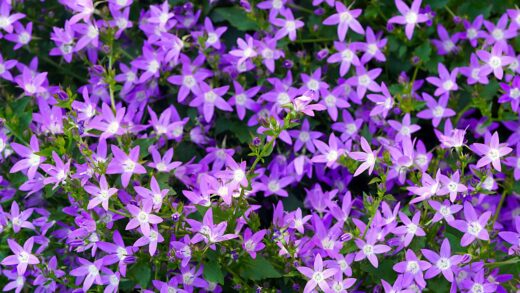Pruning and regular cutting back are not just optional maintenance tasks for peppermint; they are essential practices for encouraging a healthy, productive, and well-shaped plant. Far from harming the plant, these activities stimulate vigorous new growth, prevent the plant from becoming leggy and sparse, and delay the onset of flowering, which can diminish the quality of the leaves. Furthermore, every time you prune your peppermint, you are also harvesting its delicious leaves. Mastering a few simple pruning techniques will ensure a continuous supply of aromatic foliage and keep your mint patch in prime condition throughout the growing season.
The fundamental reason for pruning peppermint is to control its growth habit. Left to its own devices, a mint plant will naturally grow tall and focus its energy on producing flowers and seeds. Regular trimming, often referred to as “pinching back,” encourages the plant to branch out from the nodes below the cut. This process stimulates the growth of lateral stems, resulting in a much bushier, denser plant with a far greater number of leaves to harvest. This is the key to transforming a sparse, upright plant into a lush, sprawling mound of foliage.
This practice should begin when the plant is still young, perhaps only six to eight inches tall. By snipping off the top set of leaves on the main stem, you initiate this branching process early, setting the foundation for a well-structured plant. This regular harvesting-as-pruning should continue throughout the spring and summer. A healthy peppermint plant is incredibly resilient and responds very well to being cut back, often growing back even more vigorously than before. This allows for frequent harvests without depleting the plant.
It is also important to understand that pruning helps to maintain the quality of the harvest. The youngest leaves and stems are the most tender and typically have the best flavor. By continuously encouraging the production of new growth, you ensure that you always have a supply of these prime leaves. Regular trimming also prevents the plant from flowering. Once a peppermint plant begins to flower, its energy is diverted from leaf production to reproduction, and the essential oil composition in the leaves changes, often resulting in a slightly bitter or less desirable flavor.
Techniques for harvesting and light pruning
The most common form of pruning is the simple act of harvesting leaves for daily use. This method of light, frequent trimming is highly beneficial for the plant’s overall shape and productivity. The best technique is to use your fingers or a pair of small, sharp scissors to snip off the top few inches of a stem, making your cut just above a set of two leaves. This point, known as a leaf node, is where new growth will emerge. Cutting here will signal the plant to send out two new stems from that node, effectively doubling the growth at that point.
More articles on this topic
When harvesting, it is always better to take stem cuttings rather than picking individual leaves off the plant. While plucking a single leaf here and there will not cause significant harm, it does not encourage the beneficial branching that leads to a fuller plant. By taking the top portion of the stem, you are simultaneously harvesting and pruning in the most effective way. This method ensures that the plant’s energy is continually directed towards producing new, bushy growth.
Throughout the growing season, you can harvest from your peppermint plant in this manner as often as you like, provided you do not remove more than about one-third of the plant’s total foliage at any one time. This rule of thumb ensures that enough leaves remain on the plant to carry out photosynthesis effectively, allowing it to recover quickly and produce new growth. A healthy, established plant will grow back so rapidly that you can often harvest from the same plant every week or two.
This regular pinching back not only provides a steady supply of fresh herbs but also keeps the plant in a juvenile, vegetative state. This is desirable because it prolongs the period of optimal leaf production and delays the natural inclination of the plant to flower. Pay attention to the overall shape of the plant as you harvest, selectively trimming taller stems to encourage a more uniform, mounded shape. This creates a plant that is both more productive and more aesthetically pleasing.
Aggressive cutting back for rejuvenation
In addition to the frequent light pruning that comes with harvesting, there are times when a more aggressive cutting back is necessary to rejuvenate a peppermint patch. Over the course of the season, especially by mid-summer, a plant can start to look tired, leggy, or sparse, or it may begin to show signs of flowering despite regular trimming. This is the perfect time for a hard prune, which essentially resets the plant and forces it to produce a fresh, vigorous flush of new growth.
More articles on this topic
To perform a hard prune, use a pair of sharp garden shears or scissors to cut all the stems of the plant back to just a few inches above the ground. While this may seem drastic, a healthy peppermint plant with a strong root system will respond remarkably well to this treatment. This aggressive cut removes all the old, woody, or less productive stems and signals the dormant buds at the base of the plant and on the rhizomes to spring to life. This is often done once or twice during the growing season.
The best time for this rejuvenation pruning is typically after a major flowering period has been attempted by the plant, or when the foliage quality begins to decline in the summer heat. Cutting the plant back hard at this time will result in a new crop of tender, flavorful leaves for a late summer and autumn harvest. After cutting the plant back, it is beneficial to water it well and apply a light dose of a balanced liquid fertilizer to provide the nutrients it needs to fuel the rapid regrowth.
This same technique of aggressive cutting back is also employed at the end of the growing season to prepare the plant for winter. After the first frost has caused the foliage to die back, cutting all the stems down to the ground helps to tidy up the garden bed and removes any potential overwintering sites for pests or diseases. This ensures that the energy is stored safely in the roots and that the plant is ready to send up fresh, healthy shoots the following spring.
Pruning to encourage bushier growth
The primary goal of pruning peppermint, beyond harvesting, is to manipulate its growth habit to create a bushier, denser plant. This is achieved through a consistent practice of pinching back the terminal buds, which are the main growing points at the very tip of each stem. The terminal bud produces a hormone called auxin, which promotes upward growth while suppressing the growth of the lateral buds further down the stem. This phenomenon is known as apical dominance.
When you prune off the tip of a stem, you remove the source of this growth-suppressing hormone. This action releases the lateral buds located at the leaf nodes just below the cut from their dormant state. These buds are then free to sprout and grow into new stems. Because there are typically two of these buds at each node (one on each side of the main stem), this single cut results in the formation of two new branches, creating a much fuller and more branched plant structure.
This process should be started early in the plant’s life to establish a good framework. When a young peppermint plant reaches about six inches in height, make the first pinch on its main stem. As the new side branches grow and develop a few sets of leaves, you can then pinch back the tips of these branches as well. Continuing this process throughout the season will compound the branching effect, quickly transforming a single-stemmed seedling into a lush, mounded herb.
This technique is particularly important for peppermint grown in containers, where a full, bushy appearance is often highly desirable. It prevents the plant from becoming tall and lanky, which can look unattractive in a pot. By consistently pinching back the longest stems, you not only harvest fresh mint but also maintain a compact and aesthetically pleasing shape. This simple but powerful technique is the secret to cultivating an exceptionally dense and productive peppermint plant.
Timing your pruning throughout the growing season
Effectively timing your pruning activities throughout the year is key to maximizing the health and productivity of your peppermint plant. The pruning calendar begins in the spring as soon as the plant shows vigorous new growth. This is the time to start the initial pinching back to encourage a bushy habit. This early-season trimming sets the stage for the plant’s structure for the rest of the year and initiates the cycle of continuous harvesting.
As you move into late spring and early summer, the plant’s growth will accelerate. This is the period for frequent, light pruning and harvesting. You should aim to trim your plant regularly, at least every couple of weeks, to keep up with its rapid growth. This constant trimming will keep the plant in a vegetative state, focusing its energy on producing leaves rather than flowers. It is also the time when the leaves are at their peak in terms of flavor and oil content, making it the prime harvesting window.
By mid-summer, you may notice that the plant is beginning to look a bit worn out, or it might be making a determined effort to flower. This is the ideal moment for a more aggressive rejuvenation pruning. Cutting the entire plant back hard, as described earlier, will stimulate a second major flush of growth. This will provide you with a fresh crop of tender leaves to harvest through the late summer and into the autumn, effectively extending your harvesting season.
Finally, as autumn arrives and the weather cools, the plant’s growth will naturally slow down. You can continue to harvest lightly during this period. The final pruning act of the year comes after the first hard frost. At this point, the top growth will die back, and you should cut all the stems down to the ground. This end-of-season cleanup prepares the plant for winter dormancy and ensures a clean, healthy start for the following spring, bringing the annual pruning cycle to a close.


















